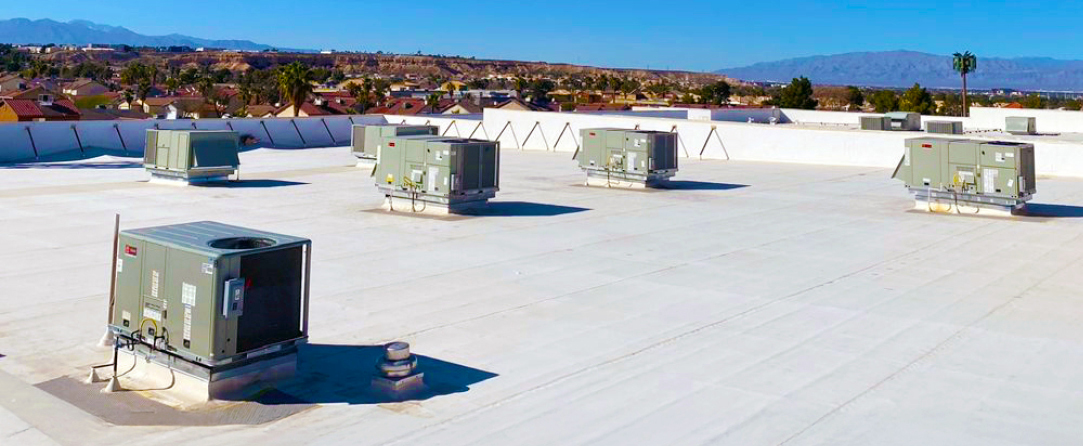
How Companies and Construction Firms Can Choose the Right Carrier for their HVAC Freight Transport
When a construction schedule is tight, HVAC deliveries can feel like a small storm with outsized consequences. Rooftop units, packaged air handlers, chillers, and condenser modules arrive on pallets, on trailers, and then must be lifted, positioned, and set in place so mechanical work can proceed. A missed lift window or a damaged coil creates rework, expensive downtime, and delays for multiple trades.
This guide helps construction teams ask the right questions, understand the real risks, and choose a carrier who will get the HVAC systems delivered and placed without drama.
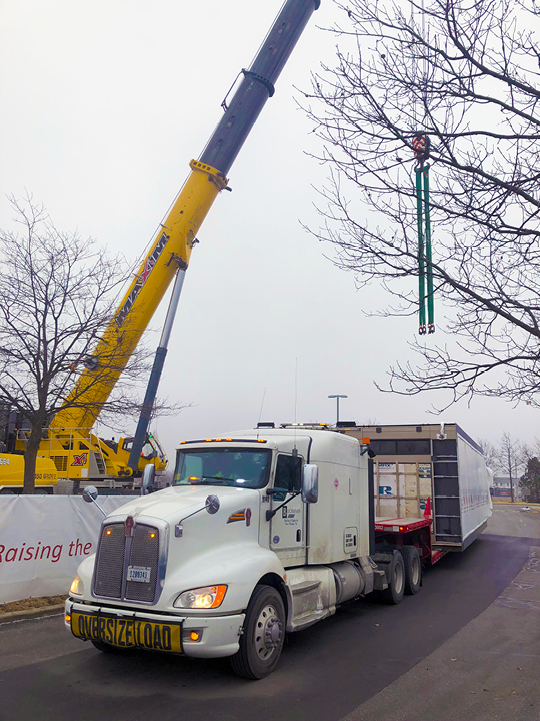
Why HVAC Freight Is Not “Just Another Load”
Size and shape. Rooftop HVAC packages and chillers are often heavy and awkward. Some chillers are wide, some rooftop packages are tall, and some modules overhang pallets or trailer rails. Loads like these may require extendable trailers or multi-axle configurations.
Delicate components. HVAC systems contain coils, fins, and controls. A dented coil, pinched fin, or crushed coring can reduce unit efficiency or require replacement of expensive parts. Securement and padding matter.
Add a crane. Many HVAC deliveries need a lift from the trailer onto a roof or into an opening. That means the carrier must coordinate with riggers, crane companies, and the site superintendent. It also means timing matters more than usual. If the carrier arrives early or late, the crane schedule and crane crew cost are wasted.
Site realities. Jobsites have constraints. Narrow access, low overhead wires, temporary roads, or unstable ground change how a truck can approach. The carrier must do route planning and site staging before arrival.
When these elements line up wrong, the outcomes are painful: schedule creep, extra crane charges, rework, claims, and unhappy owners. That makes the carrier selection a project risk decision, not a simple procurement exercise.
Key Criteria Construction Teams Should Use When Choosing a Carrier for HVAC Freight
Proven HVAC experience.
Don’t accept “we can handle it” without examples. Request references and case descriptions of rooftop deliveries, chillers, or packaged units. Experience in the niche is often the best predictor of performance.
The right trailers and assets.
Ask what trailers the carrier will use. For HVAC, you often need flatbeds, extendable, multi-axle trailers, and sometimes enclosed vans for smaller control shipments. Asset control means the carrier can commit the correct equipment when you need it.
Rigging and lift coordination.
Who arranges the crane, the riggers, the lift plan, and the lift supervisor? Does the carrier have in-house riggers or vetted partners who routinely place HVAC loads? Confirm responsibilities in writing.
Route planning and site reconnaissance.
A competent carrier will check access routes, bridge ratings, overhead clearances, and staging areas. They should flag permit needs and offer solutions for tight access.
Damage prevention and claims performance.
Ask for the carrier’s claims ratio and how they protect equipment in transit. A low claims ratio matters when you are shipping expensive units. Also, understand their damage inspection and documentation process.
On-time performance and scheduling flexibility.
HVAC deliveries tie into other trades. Ask for on-time performance metrics and how they handle last-minute schedule changes or compressed delivery windows.
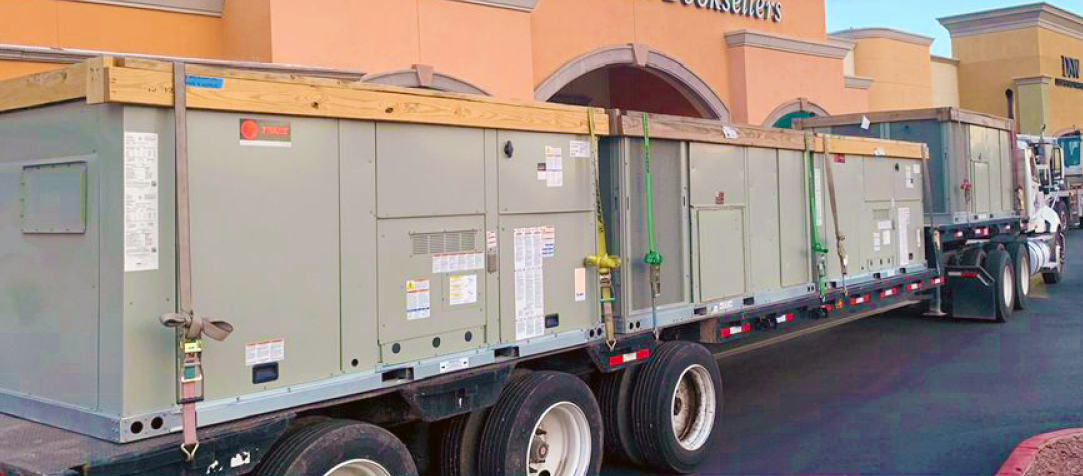
Visibility and communication protocols.
Live tracking, escalation paths, and a single point of contact make a difference. Demand shipment tracking and scheduled status updates for critical moves.
Multi-state competency.
If your equipment crosses state lines, verify the carrier’s experience managing state requirements when it comes to weight, size, travel times, escorts, or permits.
Safety culture and compliance.
Review the carrier’s safety record, driver vetting, and compliance documentation. A carrier with strong safety systems will protect your freight and your site.
Transparent pricing and accessorial clarity.
Get a line-item quote that lists permits, cranes, lift equipment, and accessorials. Surprise fees at delivery create friction and can quickly erode the value of the carrier’s promise.
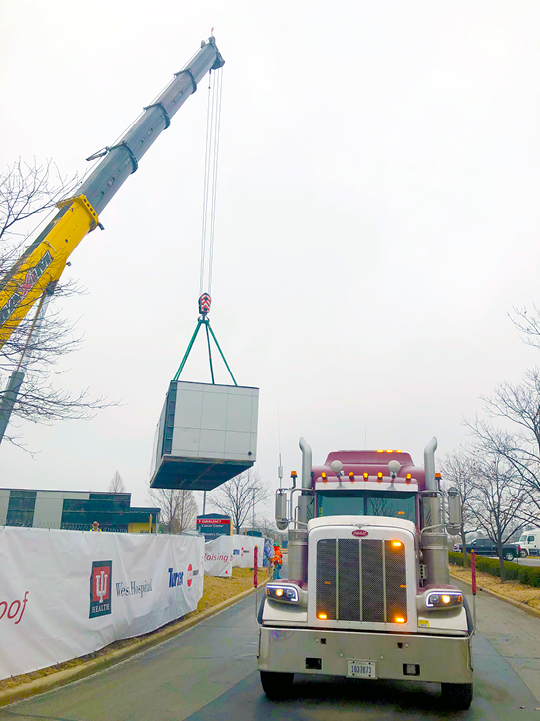
A Short Checklist You Can Use When Tendering HVAC Loads
- Provide CAD drawings and exact dimensions.
- Request a trailer match and lift plan.
- Require proof of insurance and claims ratio.
- Confirm site staging and parking requirements.
- Schedule a pre-lift conference call, including the rigger and crane operator.
- Include weather contingency clauses.
- Request the carrier to produce photographs at pickup and delivery.
Real-World Example: How a Carrier Should Move a Rooftop Unit
Imagine a 12-ton rooftop package that must be set into a penthouse at 8:00 a.m. sharp. The building sits on a narrow downtown block and the crane has a two-hour window. Here is how a professional carrier operation should run the job:
- Pre-planning. Confirm building access, height clearances, crane placement, and permitted street closures. Secure permits in advance.
- Trailer and securement. Assign a lowbed or extendable flatbed that allows the unit to sit low and centered. Use dunnage, soft packing, and vibration mitigation.
- Dispatch and tracking. Send ETA updates and live location to the project lead. Keep the rigger and crane operator informed.
- On arrival. Stage in the approved zone. The carrier will create a safe lift plan in coordination with the crane operator.
- Lift and placement. Execute the lift in the agreed window. The carrier and riggers will make adjustments and ensure no contact with building edges or rooftop obstructions.
- Post-placement. The carrier provides photographic proof of placement and unload condition. If anything is damaged, their claims process begins immediately.
This is not a theory. Projects that follow these steps reduce delays and keep other trades on schedule.
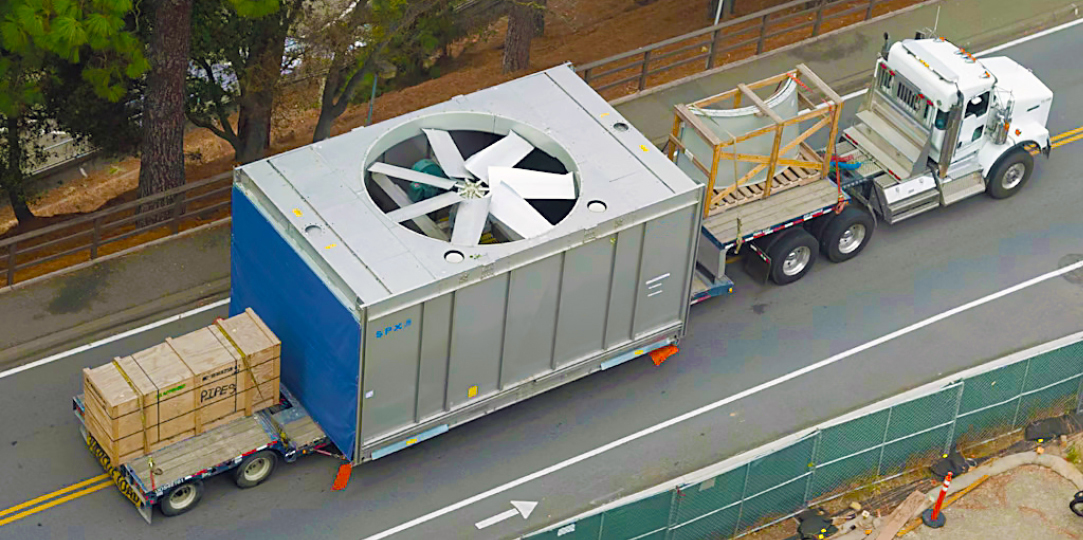
Why Buchanan Hauling and Rigging Is a Strong Match for HVAC and Construction Freight
Let’s examine Buchanan in practical, measurable terms and what that means for a contractor who needs HVAC freight delivered and set.
Proven scale and frequent heavy lifting
Buchanan handles more than 160,000 loads a year and employs over 600 professionals. Those figures reflect extensive experience moving complex, high-value freight. About Buchanan.
Fleet control and the right trailers
With more than 200 power units and 900 trailer assets Buchanan can match trailer geometry to your HVAC loads. About Buchanan.
Specialized services and heavy haul expertise
Buchanan operates specialized and heavy haul divisions for oversized moves and complex lifts. Specialized Services, Heavy Haul.
Operational performance that protects schedules
Buchanan reports a 99% on-time pick-up and delivery rate. About Buchanan.
Low claims and safety culture.
Buchanan maintains a claims ratio under 0.5% and has a consistent DOT safety rating. About Buchanan.
Technology, communication, and dedicated support
They provide 24/7 customer support, dedicated points of contact, and real-time tracking via a committed track team. For a construction manager juggling multiple trades, visibility and a single escalation path are indispensable.
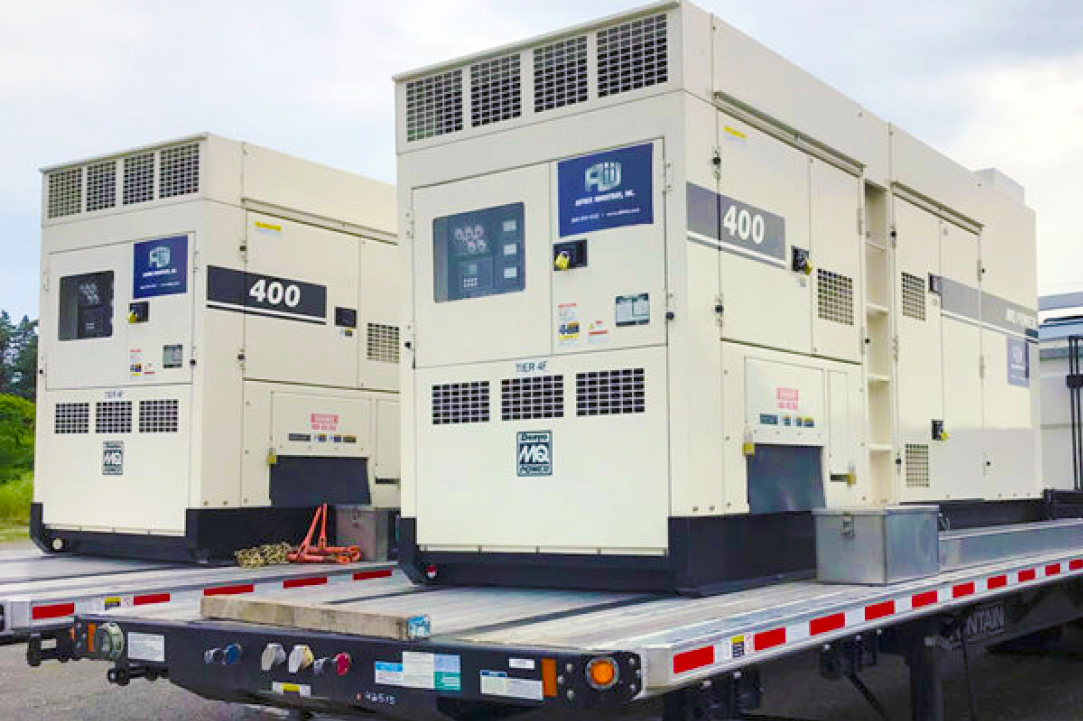
How Buchanan’s Offerings Map To The Carrier Selection Checklist
- Equipment: broad asset pool including flatbeds and drop decks. About Buchanan.
- Rigging and lift coordination: handled through specialized services. Specialized Services.
- Route and site planning: the heavy haul team manages permits and routing. Heavy Haul.
- Damage prevention and claims: low claims ratio and QA processes. About Buchanan.
- Multi-state Transport Experience: services offered nationwide. About Buchanan.
Practical Tips to Work with Your Carrier
- Share technical drawings early. If the carrier knows the roof opening and rooftop obstructions, they can plan a safer lift.
- Build a single point of contact. Give the carrier one person who owns the delivery schedule and another who owns crane coordination.
- Plan a pre-lift conference. Confirm when the truck arrives, where the crane will set up, where traffic controls will be, and who signs off on placement.
- Photograph everything. Require the carrier to photograph the unit on the trailer, the condition at the site, and the final placement.
- Build contingencies into the contract. If weather postpones a lift, what are the storage and crane repricing terms?
- Include acceptance clauses. Define how final acceptance is determined, including visible damage and functional testing.
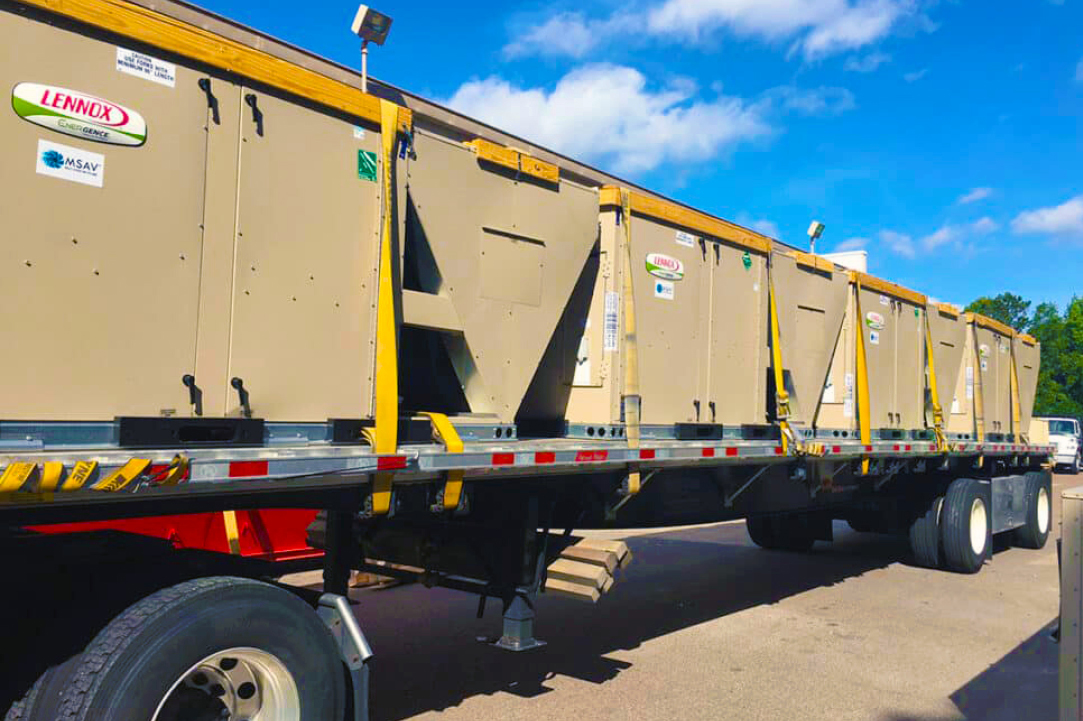
Case-style Illustration
A mechanical contractor on a mid-sized hospital project needed a large rooftop chiller placed into a penthouse. The project required a 90-minute crane window. The carrier they initially booked arrived with the wrong trailer. The crane had to be rescheduled for three days. The result: a 96-hour delay, crane rebooking fees, and weekend overtime.
The contractor switched the remaining HVAC shipments to Buchanan. Buchanan provided a trailer match, coordinated crane and rigger timing, and staged the load. Deliveries that followed arrived within the allotted windows, and the project recovered its schedule.
That example demonstrates how choosing the right carrier changes outcomes on tight schedules.
What good looks like
Good carriers help construction teams avoid surprises. They commit the right equipment. They coordinate lifts. They maintain low claims and high on-time levels. They provide a single, accountable point of contact and live tracking for critical moves.
If your next project includes rooftop packages, chillers, or complex HVAC modules, make the carrier selection part of your project risk management plan. Use the checklist above and get the carrier to show examples of similar jobs.
If your project includes HVAC systems shipments, request a rate quote or review Buchanan’s services to start. For specialized or heavy haul needs, see Specialized Services and our Heavy Haul page.
Resources
Check out our company overview ebrochures:


